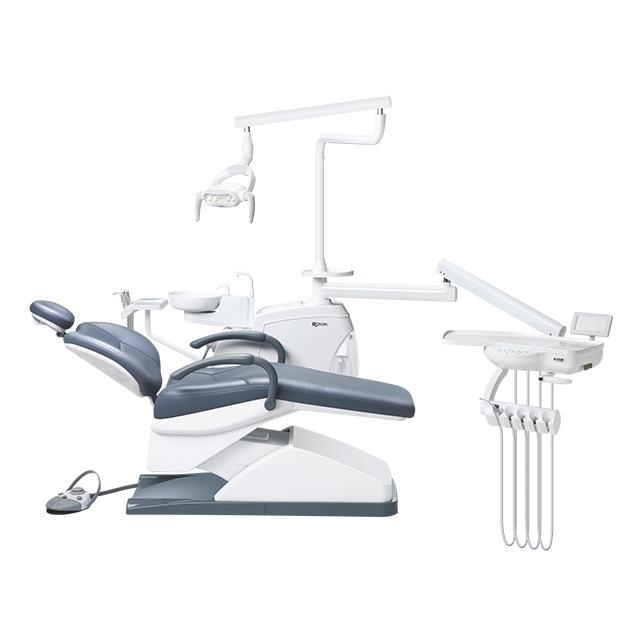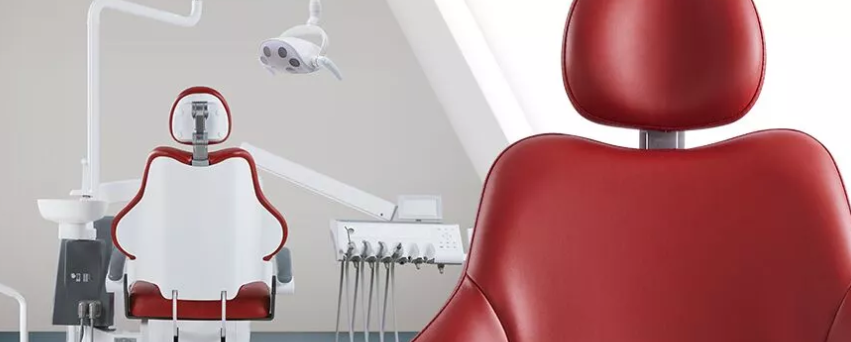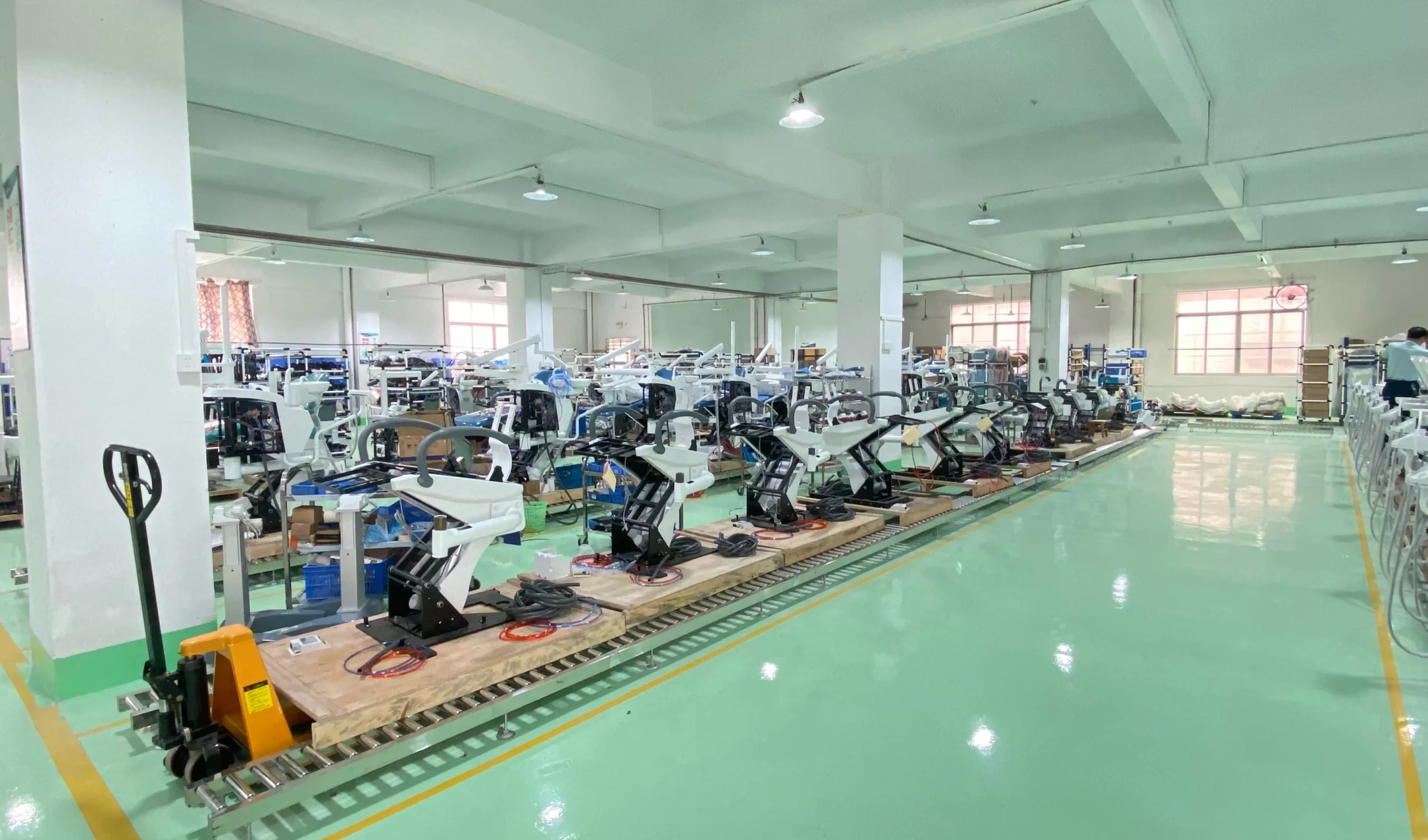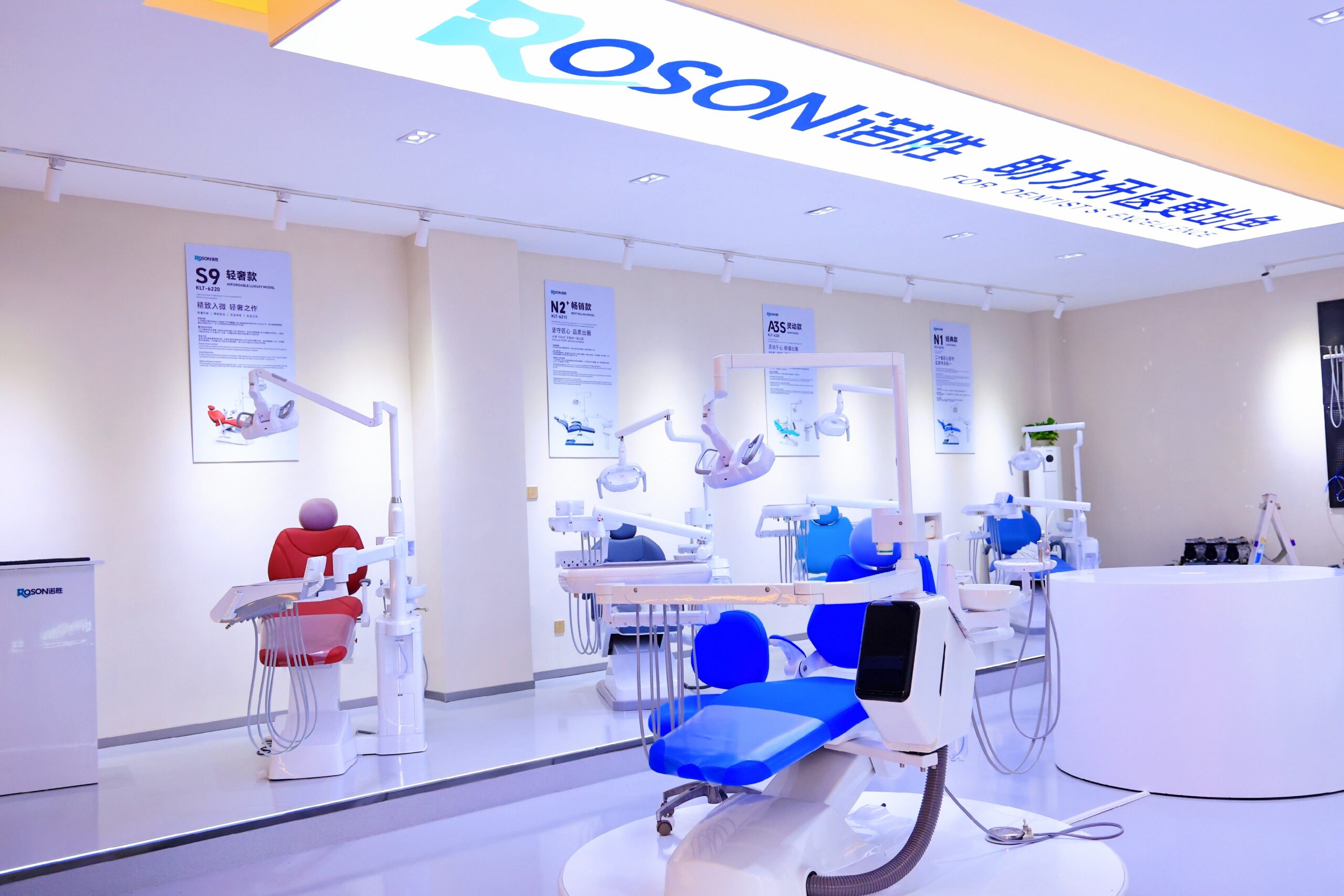Go into any dental supply house showroom, and you’re confronted with lines of shiny-looking chairs. But what they won’t tell you at the front door: selecting the wrong dental chair for dentist specialty procedures is like putting on the wrong prescription glasses—yes, you can see fine, but you’ll be hurt by lunchtime.
Specialties require different configurations. Two-hour sessions require completely different dental chair positions than those of oral surgeons, who require swift, dramatic angle movements. Your dental patient chair isn’t just furniture; it’s the cornerstone of your practice’s efficiency and your patients’ comfort.

What Special Requirements Do Different Specialties Have for a Dental Chair for a Dentist?
Each of the specialties brings with it its own brand of difficulties to the table—or to the chair. Learning the differences isn’t theory; it’s the way you prevent costly mistakes that you’ll regret for years.
Treatment Length Variance
Endodontists can keep the patient in position for about 60–90-minute root canals, whereas general dentists typically complete cases in about 30–60-minute segments. Long cases require better lumbar support and memory foam padding that won’t lose its shape over time.
Patient Demographics
Pediatric practices see squirmy five-year-olds who need colorful, non-threatening designs and safety straps. Geriatric-focused practices require chairs that sit lower to the ground for easier patient transfers and have adjustable setups for added stability.
Equipment Setup Requirements
Oral surgeons require chairs that provide sufficient space for surgical lights and anesthesia equipment. Orthodontists desire slim designs that do not compromise their frequent movement between the patient’s head.
Practitioner Working Patterns
Some prefer to work at the 9 o’clock position, while others prefer the 12 o’clock position. Left-handed setups require entirely different setups. The dominant hand and the preferred setup position determine directly which setup is most effective.
These needs specific to specialties are not preferences, but rather imperatives that impact your everyday workflow, patient satisfaction, and long-term physical health.
How Dental Chair Positions Accommodate Special Needs for Specialty Treatments?
The magic comes if your chair moves precisely the way you want it to move, precisely when you want it to move. A bad position equals bad posture; bad posture equals an early retirement at age 40.
General Chair Operations
Every decent chair tilts, reclines, and adjusts to the desired height. But basic isn’t enough anymore. Modern practices need smooth, quiet motors that won’t startle anxious patients and positioning that’s repeatable down to the millimeter.
Specialty Position Requirements
Oral surgeons require rapid supine/Trendelenburg positioning for shock management. Orthodontists prefer semi-upright positions that maintain the patient’s airway open during prolonged procedures. Endodontists prefer near-supine positions for optimal operating-microscope access.
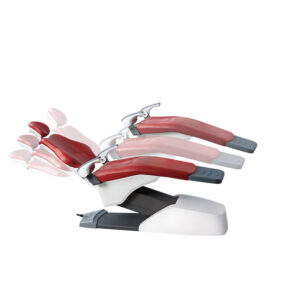
Memory Position Settings
Top-of-the-line chairs hold several positions. Define your favorite work angles once and recall them instantly. This’s not luxury—it’s productivity that equals hours saved every week.
Emergency Positioning Procedures
When the patient is fainting or requires immediate assistance, your chair needs to rotate to the recovery position immediately. A one-touch emergency position can be the deciding factor between a near-miss and a medical emergency.
It’s not about having the most significant number of adjustments; it’s about having the appropriate adjustments for you personally.
Which Features Should Each Specialty Focus on in a Dental Patient Chair?
Let’s cut through the marketing fluff and look at what actually matters for each specialty:
Specialty Dental Chair Feature:
| Specialty | Backrest Range | Headrest Needs | Armrest Design | Special Features | Weight Capacity |
| Orthodontics | Semi-upright to reclined | Height Adjustable | Foldable | Extended Comfort Padding | Typically 300–500 lb |
| Endodontics | Near-supine to full recline | Multi-Angle Adjustment | Removable | Slim backrest for microscope access | Typically 300–500 lb |
| Oral Surgery | Upright to full recline | Full Recline Capable | Wide Protection | Quick “CPR” flat function | Often 400–500 lb or more |
| Pediatric | Semi-upright to reclined | Fun Designs | Safety Guards | Low entry height / height adjustment | Pediatric-sized; check model rating |
| Periodontics | Semi-upright to reclined | Standard Adjustable | Standard Design | Integrated Rinse System | Typically 300–500 lb |
The differences are stark. Surgeons and endodontists need maximum range for visibility. Pediatric specialists prioritize safety and engagement features. Orthodontists focus on sustained comfort for marathon appointments. Don’t buy features you won’t use, but never skimp on the ones you need daily.
What Key Factors to Consider in Selecting Specialty Dental Chairs?
Besides the prominent features, numerous factors determine whether a chair is an investment or an expensive misstep.
Budget and Value
Quality dental chairs typically range ~$7,500 to $19,000+ (chair only). But think about it this way: A $15,000 chair in 2,000 hours annually for 10 years costs $0.75 an hour. That’s cheaper than your disposable bib costs you per patient.
Installation and Space
Measure twice, buy once. Account for full recline clearance, delivery system swing radius, and assistant access paths. Many chairs need dedicated electrical and plumbing rough-ins.

Brand and Support Services
When your chair breaks mid-procedure, response time matters. Local service availability beats fancy features from a company three states away.
Upgrades Possible
Technology is rapid. Modular-designed chairs enable you to install new delivery systems or digital integrations without needing to replace the entire unit.
It’s the correct choice between near-term necessity and long-term practice development. Don’t buy for tomorrow—buy for where you will be in five years.
FAQs
Q1. Can One Dental Chair Accommodate Multiple Specialists in a Group Practice?
Though premium-adjusting models may accommodate partially across several specialties, you’re indeed making everyone compromise. It’s like having the contractor’s car and the real estate agent’s car—theoretically doable, but everyone’s just not completely satisfied. Specialty-specific chairs often reduce repositioning time and ergonomic strain (no universal % figure). The time saved from not having to adjust and the ergonomic enhancements generally offset the need for dedicated chairs. However, if budgeting definitely requires sharing, consider spending on the most programmable chair within the budget, which offers multiple memory settings for each practitioner.
Q2. How Valuable Are Contouring Dental Chair Positions for Specialist Practices?
Programmable positions are Practice Game Changers if you do repeated procedures. Consider this: if you perform 10 root canals per week and take 30 seconds to set positions each time, that’s more than 4 hours annually just moving chairs. Programmable positions guarantee consistency, minimize practitioner fatigue, and enhance patient experience with smooth, customized movement. They’re particularly valuable in practices with several hygienists or associates that require unique preferred settings. State-of-the-art chairs accommodate 4-10 positions and enable you to program settings ranging from patient entry to specialized angles for procedures and emergency positions.
Q3. What Is the Average Service Life of the Specialty-Specific Dental Patient Chair?
Durable dental chairs are built to last and generally last 10-15 years with regular maintenance. The mechanics rarely fail—it’s the upholstery that tends to age the earliest. Technology infusion may expedite replacement. Chairs purchased five years ago may be unable to accommodate today’s digital sensors or delivery systems. The question is really how long they stay competitive rather than how long they last. Practices targeting youth demographics may need to be updated every 7-8 years to maintain a modern and edgy look. In contrast, established practices with strong, loyal patient groups may remain unchanged for the full 15 years.
Selecting the Right Dental Chair
Your dental chair choice has a direct impact on anything from procedural effectiveness to career longevity. Free yourself from the furniture frame of mind and view it as the most essential tool in your operatory. To debut a new practice or upgrade outdated equipment, invest the time to match your chair to your distinctive workflow in your specialty. Test out several models, ask your colleagues in your specialty for recommendations, and do not settle on “good enough” with the equipment with which you will spend thousands of hours each year.
Ready to be paired with the ideal mate? Start with your three most common procedures and create your specifications from there. Your back, your patients, and your bottom line will be thankful.


